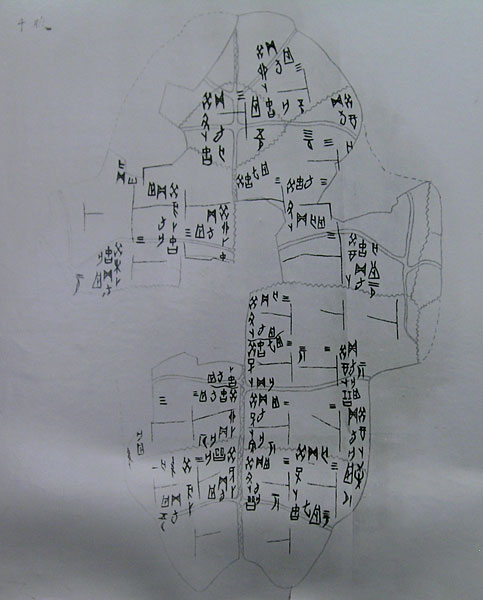 |
| The earliest records of stars are found carved into shells and bones. This rudimentary calendar was carved into a turtle bone before 2000 BC. Evidence of celestial observation has been found dating back to at least 14000 BC and perhaps earlier.
During the Yin period of the Shang Dynasty the calendar gradually took an embryonic form, then developed more and more. The best records start with the Spring and Autumn Period (722-481 BC) and the Warring States Period (403-221 BC) of the Zhou Dynasty. The Huangdi Li (黄帝历 huángdì lì), Zhuanxu Li (颛顼历 zhuān xū lì), Xia Li (夏历 xià lì), Yin Li (殷历 yīn lì), Zhou Li (周历 zhōu lì), and Lu Li (鲁历 lǔ lì) were some of the earliest formal calendars officially recognized by the dynasties at the time. The Chinese calendar developed on a lunisolar basis. Observations of both the lunar cycle and the solar cycle were necessary to predict recurring events. The challenge of combining the two cycles stimulated developments in mathematics and astronomy through history. The function of the calendar was both agricultural and astrological. Divination of the future was an important part of the power of the ruler. Harnessing the magic of the calendar to do so meant that dynasties through history supported the science of astronomy in order to get more accurate astrological predictions. |
http://hua.umf.maine.edu/China/beijing2.html
Last
update: May 2007
© Marilyn Shea, 2007